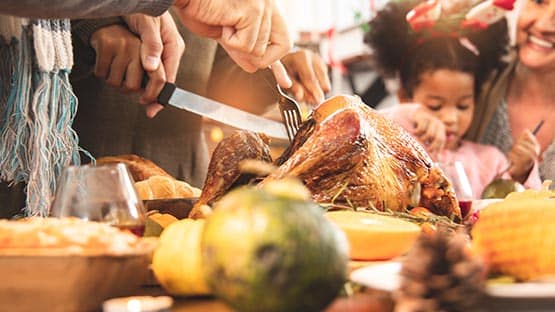
While there will be enough turkeys to meet Thanksgiving demand this year, consumers can expect to pay more than double for their holiday bird.
Inflation and avian influenza outbreaks are contributing to the price hikes, according to American Farm Bureau Federation economists.
The retail price for fresh boneless, skinless turkey breast reached a record high of $6.70 per pound in September, 112 percent higher than the same time in 2021 when prices were $3.16 per pound.
The previous record-high price was $5.88 per pound in November 2015, during that year’s highly pathogenic avian flu outbreak.
Retail food prices in general were 11.4 percent higher this August compared to the same time last year.
“All of us are feeling the pain of higher prices at the grocery store,” said AFBF President Zippy Duvall. “HPAI outbreaks in the spring and an uptick in cases in the fall are taking a toll, but farmers remain dedicated to ensuring America’s food supply remains strong.”
A cost hike for feed, fuel and fertilizer makes raising turkeys more expensive. Record-high production costs increased by 17.8 percent from 2021.
Louisa County farmer Casey Hoback raises upward of 47,000 turkeys annually at Hoback Farms LLC. While his flocks have remained healthy, supply disruptions associated with HPAI still affect his operational costs.
“It has knocked out a lot of breeder flocks, so egg production is greatly reduced,” said Hoback in a news release. “Supply is quickly drying up in spots, and there’s not an overnight replacement. It takes months of growing time.”
HPAI is resurging in the U.S. this fall due to waterfowl migration, according to Tony Banks, senior assistant director of agriculture, development and innovation for Virginia Farm Bureau Federation. And turkey production was already down over 13 percent from pre-pandemic levels in September, further straining supply, he explained.
“Turkey processing weights also are down as companies process birds at lighter weights to avoid potential flock losses to HPAI; however, these lighter birds, at 7 percent smaller than in September 2021, also limit supplies.”
Inflation just exacerbates those challenges.
“Fuel is a huge driver of cost increase,” said Hoback. “Petroleum is a building block of commercial fertilizer that goes into making feed, which drives up raw feed costs. The cost of fuel also affects the cost of hauling turkeys and feed.”
Despite the record high prices, Americans aren’t expected to go cold turkey this year.
The U.S. Department of Agriculture estimates per capita turkey consumption is forecast to increase 7.7 percent heading into 2023.
Consumers may be seeking turkey as a price-conscious alternative to other meats, which also have increased in price due to a combination of COVID-related supply chain issues and inflation.
Related stories
Talkin’ turkey: Is there going to be a shortage of turkeys at Thanksgiving this year?










